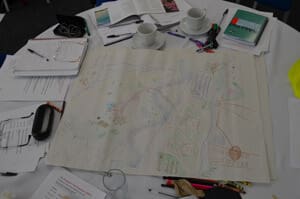
This report explores the various methods that have been used in the UK and abroad to distribute benefits from offshore energy developments. In particular, the report considers the relationship between how communities are identified, how impact is perceived, and how benefits may therefore be distributed. This evidence is used to identify good practice and key points of learning for Scottish policy and planning.

The report presents an analysis of the factors which support and limit the ability of communities to invest in commercial renewable energy schemes, and makes recommendations for action based on domestic and international evidence. It concludes that there is significant potential for increased community investment in commercial energy schemes, given the appropriate support, funding and advice.
Useful links
This report looks at developers’ community engagement practices across a range of wind farm developments in the UK and the rest of Europe.

- wide-ranging and innovative methods of engagement;
- methods which facilitate dialogue (rather than just transmitting information);
- instances where action is taken on the basis of responses gathered;
- measures to keep engagement going through all stages including approval and construction;
- using a wide ranging definition of an ‘affected’ public; and
- identifying and implementing tangible benefits.
It makes recommendations for how best practice guidance on community engagement should evolve.